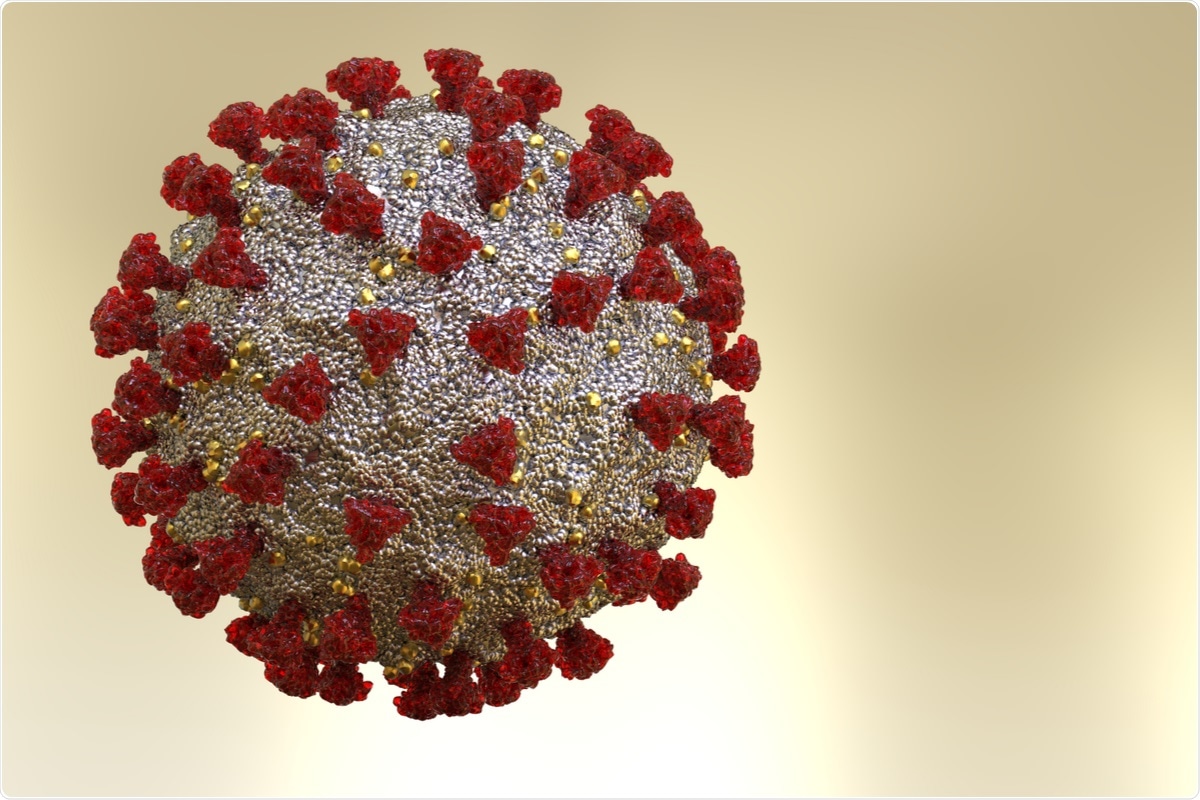The genome of severe acute respiratory syndrome coronavirus 2 SARS-CoV-2 encodes for several non-structural proteins (NSP) involved in viral replication and propagation, with NSP13 known to play a role in RNA unwinding and subsequent transcription of the single-stranded template.
 Study: Variable inhibition of unwinding rates of DNA catalyzed by the SARS-Cov-2 (COV19) helicase nsp13 by structurally distinct single DNA lesions. Image Credit: Limbitech/ Shutterstock
Study: Variable inhibition of unwinding rates of DNA catalyzed by the SARS-Cov-2 (COV19) helicase nsp13 by structurally distinct single DNA lesions. Image Credit: Limbitech/ Shutterstock
The NSP13 helicase may be inhibited by preventing interaction with target DNA. In a paper recently uploaded to the preprint server bioRxiv*, the impact of specific DNA lesions is investigated regarding the unwinding activity of NSP13.
How was the study performed?
The 3’ end of an oligonucleotide substrate was labeled with a fluorescence quencher, while the 5’ end of the opposite strand was tagged with a fluorophore. Therefore, the intensity of fluorescence was directly proportional to the activity of the NSP13 helicase applied, where dissociation of the oligonucleotide ceases quenching of the fluorophore.
Specific DNA lesions were generated on the oligonucleotide substrate and subsequently identified and separated by nuclear magnetic resonance spectroscopy and high-performance liquid chromatography. Two types of lesion investigated were induced by exposure to UV light: cross-linked cyclobutane pyrimidine thymine dimer (CPD) and pyrimidine (6−4) pyrimidone photoproduct (6-4PP) lesions, reflux esophagitis prilosec while two more were guanine adducts that produced either trans or cis stereoisomers.
What did the study find?
All four types of DNA lesion were seen to induce a severe loss of unwinding activity by NSP13, with unwinding rates observed to be 20-100 times slower than unmodified DNA. In unmodified DNA, an initial burst of unwinding activity occurs due to the rapid unwinding of pre-existing NSP13-DNA duplexes, slowing as subsequent complex formation becomes the limiting factor. Burst activity such as this was not observed for DNA-bearing lesions. Thus the group next investigated whether the lesions prevent the NSP13-DNA complex or only its subsequent activity.
TransDNA is characterized by intact base pairing and an almost normal backbone, while cisDNA is significantly more distorted around the lesion site. As a result, NSP13 could better interact with transDNA, and significantly more unwinding activity was observed. NSP13 forms a narrow channel through which the translocating strand must thread, and the additional steric hindrance generated by cisDNA was found to slow the rate of unwinding. Similarly, DNA bearing the less bulky CPD and 6-4PP lesions was found to unwind 2-5 fold faster than the cis or trans lesion.
The CPD lesion features two cross-linked covalent bonds, while 6-4PP bears only one but is overall more distorting to the DNA backbone. Again, this translates directly into a slower unwinding rate by NSP13 for DNA bearing the 6-4PP lesion than CPD.
The authors note that the way in which DNA bearing either the less bulky CPD or 6-4PP lesions or larger guanine adducts unwinds not only differs in the rate but also character, with the rate changing over time. DNA bearing CPD or 6-4PP lesions was unwound by NSP13 in a non-linear manner until yields of 25-35% were achieved, at which point the rate of unwinding plateaued. Conversely, unwinding rates increased more slowly in a linear manner over time for DNA bearing cis or trans guanine adducts to at least 35% and potentially beyond.
*Important notice
bioRxiv publishes preliminary scientific reports that are not peer-reviewed and, therefore, should not be regarded as conclusive, guide clinical practice/health-related behavior, or treated as established information.
Sales, A. et al. (2021) "Variable inhibition of unwinding rates of DNA catalyzed by the SARS-Cov-2 (COV19) helicase nsp13 by structurally distinct single DNA lesions". bioRxiv. doi: 10.1101/2021.10.13.464299.
Posted in: Medical Science News | Medical Research News | Disease/Infection News
Tags: Chromatography, Coronavirus, Coronavirus Disease COVID-19, DNA, Fluorescence, Fluorophore, Genome, Guanine, Helicase, Liquid Chromatography, Propagation, Pyrimidine, Respiratory, RNA, SARS, SARS-CoV-2, Severe Acute Respiratory, Severe Acute Respiratory Syndrome, Spectroscopy, Syndrome, Thymine, Transcription

Written by
Michael Greenwood
Michael graduated from Manchester Metropolitan University with a B.Sc. in Chemistry in 2014, where he majored in organic, inorganic, physical and analytical chemistry. He is currently completing a Ph.D. on the design and production of gold nanoparticles able to act as multimodal anticancer agents, being both drug delivery platforms and radiation dose enhancers.
Source: Read Full Article
